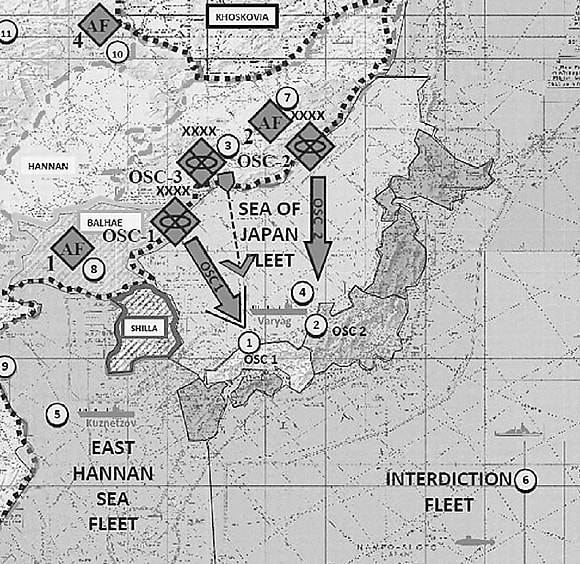Akahata on August 30 reported that it discovered this through the information network called “APAN (the All Partners Access Network)” which was set up with the aim to help exchange and share information between the U.S. Department of Defense and any external organization and individual. APAN unusually released 150 pieces of information Yamasakura 61-related materials.
The released information includes a simulation in which, in accordance with the development of military conflicts on the Korean Peninsula, a neighboring power increases its military threat to the peninsula as a result of withdrawal of the Korean-based U.S. forces from the southern part of the peninsula. The simulation also illustrates that after the power gets control of the northern part of the peninsula, it invades Japanese islands in order to advance its influence.
This simulation provides a concrete image of Japan-U.S. joint military operations in response to an attack against Japanese islands as indicated in the National Defense Program Guideline adopted by the Kan Cabinet in December 2010 under the pretext of threats by China and North Korea.
The reason why the Self-Defense Forces together with the U.S. military run such a simulation is because under the Japanese Constitution prohibiting Japan-U.S. joint military actions abroad, an objective of Japan-U.S. joint military exercises needs to be for the defense of Japan.
Meanwhile, for the U.S. military, an objective of the joint exercises is to strengthen its military structure for immediate response to conflicts in the Asia-Pacific region.
The Japan-U.S. joint military exercises go beyond the defense of Japan and are used to train U.S. troops which are deployed globally.
Yamasakura 61 will be held at the Itami Camp (Itami City, Hyogo Prefecture), GSDF’s headquarters, from January 31 to February 5, 2012.
*******
Akahata has found that, as of August 31, information regarding the scenario for the Yamasakura 61 was removed from the APAN.
 岩国・労働者反戦交流集会
岩国・労働者反戦交流集会




